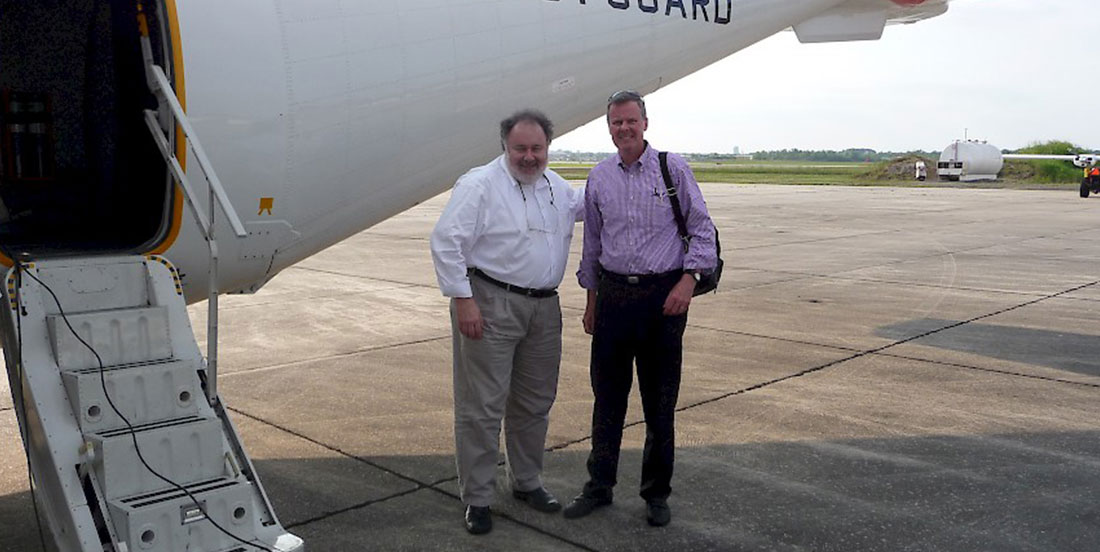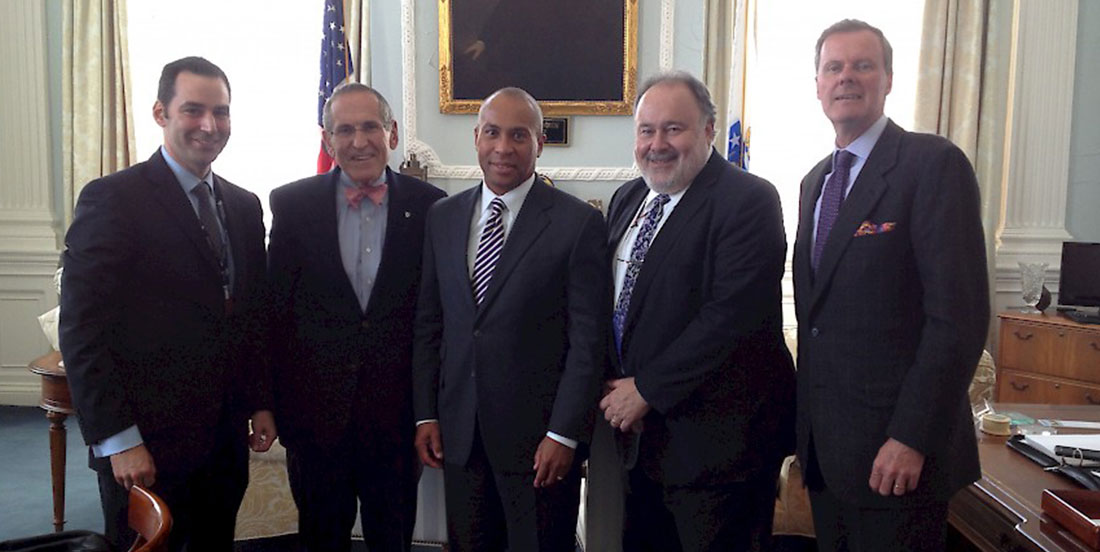In almost any adverse incident, whether natural or manmade, the general public is involved. At times, they are the victims and survivors. Active bystanders may be the true first responders simply because of proximity. Volunteers often surge forward hoping to help. Eager though untrained, members of the public can be a help or hindrance – and the difference may be how effectively they are led.
For several years, “whole of community” has been a theme in preparedness and response circles. The goal is to engage as many individuals and entities as can productively participate in making a community safer and more resilient. Few measures, however, can reveal whether the general public is more engaged or better prepared as a result. Professional responders know that the public will be affected and involved. The question is how to lead them most productively.

Members of official organizations tend to self-identify as the “real” responders. The “in” group is comprised of those who are with an agency, are credentialed, or are certified in Incident Command System/National Incident Management System (ICS/NIMS). Then there is everyone else. There can be a tendency to look at these “others” as of marginal value in both preparedness and response. At times, untrained volunteers may offer more risk than reward, as colleagues at the National Preparedness Leadership Initiative (NPLI) saw in the 2010 Deepwater Horizon oil spill (see Figures 1-2). Unskilled and ill-equipped, members of the public put themselves at risk to chemical exposure and did inadvertent damage to the environment. In other situations, such as the 2013 Boston Marathon bombing and 2012 super storm Sandy responses, there was great value from self-deployed, ad hoc responders. Whether assisting the injured in the former or building mesh networks in for communications connectivity in the latter, they filled critical gaps in the overall response.
The four directions of the connectivity dimension of meta-leadership provide an instructive framework for considering the options. With professional responders in the center of the network, think of them leading: up to those to whom one is accountable; down to those who are accountable to them; across to others under a common governance structure; and beyond to peers outside of the common governance structure.
Leading across is the facet least potentially applicable as the public is not one more “silo” in one’s organization. From there, however, things get interesting. The “up” quadrant, which typically includes “the boss,” is one where influence outweighs authority in giving guidance and prompting decisions. Responders are ultimately accountable to the citizens and taxpayers who sanction and fund their efforts. They are, after all, servants of the public. Seasoned subordinates know that giving those above them a job to do can be the best route to keeping them from finding something counterproductive with which to occupy their time.
Leading down may be where many responders situate the public, either explicitly or implicitly. They give direction to community members and expect obedience. After all, it is the professionals who are “in charge” and who have specialized knowledge and skill to cope with the dangers of a hazardous environment. Subordinate status, however, requires the consent of the suborned. The same members of the public who may willingly follow direction in the chaos of an active shooter event may resist it when trying to assist neighbors after a wildfire. Even with their authorized status, officials are likely to limit the authority they exercise to the most extreme or dangerous circumstances.
For example, in a 2013 interview with Massachusetts’ Governor Deval Patrick in the aftermath of the Boston Marathon bombings, NPLI inquired about the decision to “lock down” much of greater Boston (see Figure 3). The governor quickly and emphatically corrected the interviewers. It was a “voluntary shelter-in-place request,” not an order to stay off the street. The request was so effective, however, that the mayor of one local community not originally included in the affected area asked his citizens to comply as well. And they did.

Leading beyond may seem an odd designation for the public as it puts them in the category of “peer.” However, self-deployed individuals have increasingly played productive roles. Participants in Occupy Sandy distributed food and other supplies to affected populations after that destructive hurricane in 2012. In the aftermath of Hurricane Harvey in 2017, the “Cajun Navy” rescued stranded individuals. Disaster response has become an avocation for some, and they expect respect for the capacity and capability they bring to bear.
Finding the Best Way to Lead
Which way is the best to lead depends on many factors. However, a multi-faceted approach to leading public involvement is both prudent and productive.
For much of the public, leading “up” may be the most effective attitude. Members of the public do not like being told what to do. Witness the frequent resistance to evacuation orders in the face of impending hurricanes and other sever weather. Despite many inquiries, there is not yet a definitive answer as to what percentage of the public has the 72-hour supply of food and other essentials on hand suggested by the government. Nor does anyone know how many people understand why 72 hours is a significant number.
The 72-hour warnings are essentially transactional: Do this (prepare) and the government will do that (show up within three days). The message is “comply and be safer or ignore them at your own peril.” A better approach is transformational. One of the tenets of meta-leadership around leading up is instructive in this regard: understand what matters to those above and how those people best receive information. Thinking of the public as a population over which one has, at best, limited positional authority reveals that there is primarily influence to deploy. One’s ability to influence can be enhanced by listening and understanding the concerns of those one hopes will prepare for a major calamity. Economic, physical, and emotional forces shape the behavior of people. Grasping and appreciating those considerations is hard work; certainly harder than crafting yet one more clever, prescriptive public service campaign. Yet, deriving those insights is essential to leading behavior change.
Two useful sources of information in this regard are the Edelman Trust Barometer and the Yale Program on Climate Change Communication. The former, updated annually, uncovers how the public feels about institutions, current issues, spokespeople, and communication channels. The Barometer is useful in determining how to frame the message and choose a messenger. The latter, while focused on one specific issue, has much to offer about what it takes to have people comprehend an abstract threat and act to mitigate it.
There are other segments of the population to which one can lead “down.” Those at immediate perceived risk are often receptive to direction. They sense danger and want to be told what to do. In preparation, there are those who join Community Emergency Response Teams (CERTs) and similar entities as a way of integrating themselves into the emergency management hierarchy. They may not have full-time disaster responsibilities, though they are willing to invest their time to be trained and, when needed, deployed. They willingly enter the chain of command and are eager to be put to work.
Yet another segment can be engaged by leading “beyond.” These are the ad hoc groups such as Occupy Sandy and the Cajun Navy. Official responders can choose to ignore them, although that will not stop them from undertaking their self-appointed mission. They can try to actively discourage them, breeding resentment and potential conflict. Or they can find ways to work with them.
In meta-leadership terms, leading beyond requires motivating unity of mission and often calls for generosity of spirit and action. Each entity needs to invest in understanding and appreciating the capabilities and limitations of others. This is facilitated through “translators” with credibility in both formal and informal response networks. These individuals are able to translate “government speak” into “street talk” and back again. They can explain the rules and norms – even loosely coupled movements such as Occupy have them – to illustrate why entities are behaving in certain ways. The challenge to leaders is to foster peer relationships based on trust and respect.
In their interaction with the Cajun Navy, officials defined the rules of engagement simply: Do not leave anyone in a place where they are stranded. In other words, do not simply move someone from their flooded home to higher ground; get them to an area where official responders can help them. This arrangement leveraged needed capacity from the volunteers and shaped a positive narrative of people working together for the greater good.
A Multifaceted Approach in Practice
The experience of Joplin, Missouri, is illustrative. Joplin is best known for the heroic efforts by the community in the aftermath of a devastating tornado in 2011. Less known, however, is that some of the foundational elements of that response sprung from an initiative to stanch the local high school dropout rate.
A core group of community leaders saw that the economy was shifting. The factory jobs at which a high school dropout could earn enough to buy a home and raise a family were disappearing. The future vitality of Joplin depended on a better educated workforce. They invited people from public, private, and nonprofit sectors to join them and were surprised by the number who responded. This is an important leadership lesson: It is easier to motivate people when they perceive the urgency of a problem and are invited to help shape the solution.
Although the doors were open to everyone, there was also a hurdle to participate beyond the initial meeting. Each person had to agree to join a multi-week education program to understand the root causes of the decision to drop out of school. If they were to help solve the problem, they had to commit to truly understanding the problem. They embarked on a shared journey to explore nutrition, poverty, domestic violence, substance abuse, and many other factors that motivated young people to abandon education.
At the end of that process, the group committed to meeting the needs of any potential dropout within 24 hours of learning about it. If someone needed shoes, they would find shoes. If they required a safe place to live, they would provide one. The response network was a coordinated combination of nonprofit agencies providing their normal services, volunteers to fill some of the needs that traditional service providers could not, and funders who would provide the financial resources to meet yet other needs.
In making the commitment to potential dropouts, the group led up. They did not lecture or harangue these young people. Instead, they led by putting themselves in the service of removing obstacles to the success of those students. Within individual components of the system, leading down maintained order and ensured compliance with the relevant laws and regulations. Each entity led across its various internal silos to gain cooperation and contribution to the effort. Beginning with that first meeting, the core group led beyond. They recruited others to give what they could on mutually acceptable terms. They started with the assumption that none of them had all of the answers and that, more likely, all of them had part of the answer.
Then, on that fateful May day in 2011 when the tornado struck, it was this network that sprang into action. The trust-based relationships and problem-solving acuity cultivated for one cause were put to use in another. Some of the same mechanisms, such as for in-kind donations, were flipped from serving potential dropouts to helping tornado survivors. The work they did together is a case study in resilience. For more on their efforts, Joplin Pays It Forward NPLI alumnus Jane Cage compiled a book of lessons learned.
Working with the public is a true meta-leadership challenge that presents many defining “you’re it” moments. Leading successfully requires the self-confidence and humility to meet people where they are, the wisdom to discern both the potential and pitfalls they represent, and the curiosity to uncover their motivations and concerns. When practiced adeptly, this approach links disparate resources and finds leverage points to unlock vast capacity for preparedness, response, and resilience.

Leonard J. Marcus
Leonard J. Marcus is co-director of the National Preparedness Leadership Initiative (NPLI), a joint program of the Harvard T.H. Chan School of Public Health and the Harvard Kennedy School of Government. In collaboration with colleagues and through extensive research, he has pioneered development of the conceptual and pragmatic bases for meta-leadership, the Walk in the Woods method for interest-based negotiation, and applications of systematic dispute resolution for multidimensional problem solving.
-
Leonard J. Marcushttps://www.domesticpreparedness.com/author/leonard-j-marcus
-
Leonard J. Marcushttps://www.domesticpreparedness.com/author/leonard-j-marcus

Eric J. McNulty
Eric J. McNulty is associate director of the National Preparedness Leadership Initiative (NPLI). Leonard J. Marcus is the NPLI’s founding co-director. They are two of the co-authors of a new book on leadership: You’re It: Crisis, Change, and How to Lead When it Matters Most (PublicAffairs, June 2019). The NPLI is a joint program of the Harvard T.H. Chan School of Public Health and the Center for Public Leadership at the Harvard John F. Kennedy School of Government.
-
Eric J. McNultyhttps://www.domesticpreparedness.com/author/eric-j-mcnulty
-
Eric J. McNultyhttps://www.domesticpreparedness.com/author/eric-j-mcnulty
-
Eric J. McNultyhttps://www.domesticpreparedness.com/author/eric-j-mcnulty
-
Eric J. McNultyhttps://www.domesticpreparedness.com/author/eric-j-mcnulty






